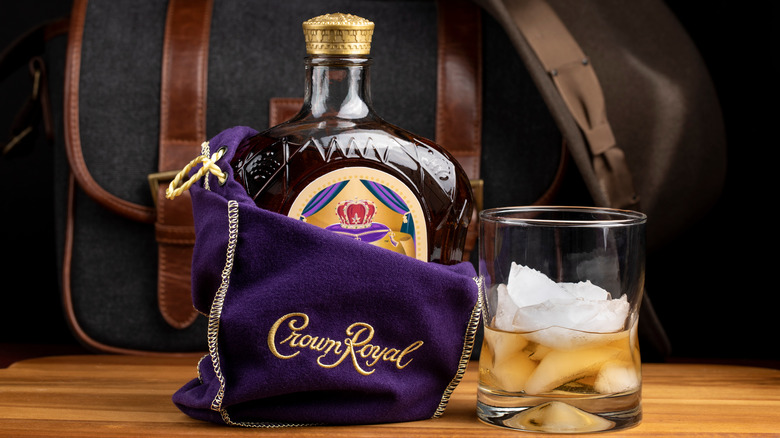The Real Difference Between Scotch And Canadian Whisky
If you're a whisky drinker, you've probably enjoyed a sip of caramelly, spicy Scotch – maybe neat, maybe on the rocks, or maybe with a few drops of water as is traditional to bring out new flavors and structures. But whether you knew it or not, chances are good that you've also tasted whisky from a more unexpected source: Canada.
From Crown Royal's gold-etched and glass-blown bottles produced to honor Queen Elizabeth II (via the Ontario Museum Association) to Fireball Cinnamon Whisky, Canadian whiskies run the gamut of flavor and complexity. And they're incredibly popular: Crown Royal is second only to Jack Daniels in U.S. sales, per Forbes. Based on 2021 projections, over the next five years, the Canadian whisky market is expected to hit $5.5 billion, although much-coveted Scotch is expected to dominate by reaching $33 billion in industry value (via Global Market Insights).
So what's the real difference between Scotch and Canadian whisky? The aspects that distinguish the two dark spirits go beyond just the countries of origin.
How Scotch and Canadian whiskies are really made
A primary distinction between Scotch and Canadian whiskies is geographical: Scotch comes from Scotland, and Canadian whisky comes from the Great White North. But even beyond their origins, the two spirits are not the same.
Scotch must contain mostly malted barley – other cereal grains are optional – and must be matured in oak barrels, in Scotland, for more than three years, per The Wall Street Journal. And Scotches labeled 'single-malt' are 100% barley (via Travel + Leisure). The brand name itself is also an indicator: If a European whisky has "glen" in the name, you know it came from Scotland.
Canadian whisky, on the other hand, is made by Canadian workers in Canada using Canadian grain – often wheat, corn, and some rye, Canadian whisky expert Davin de Kergommeaux told Forbes. Like Scotch, the spirit must also be aged for at least three years. However, due to the relatively more flexible regulations, Canadian whiskies have become known for carefully crafted blends – which, despite a pervasive rumor, does not mean Canadian whiskies can contain juices or other fillers (via Distiller). So next time you open a purple bag of Crown Royal, you know the masterful blend of flavors is just as representative of Canada as Scotch is a taste of the five Scottish whisky regions (via Scotch Whisky Association).

